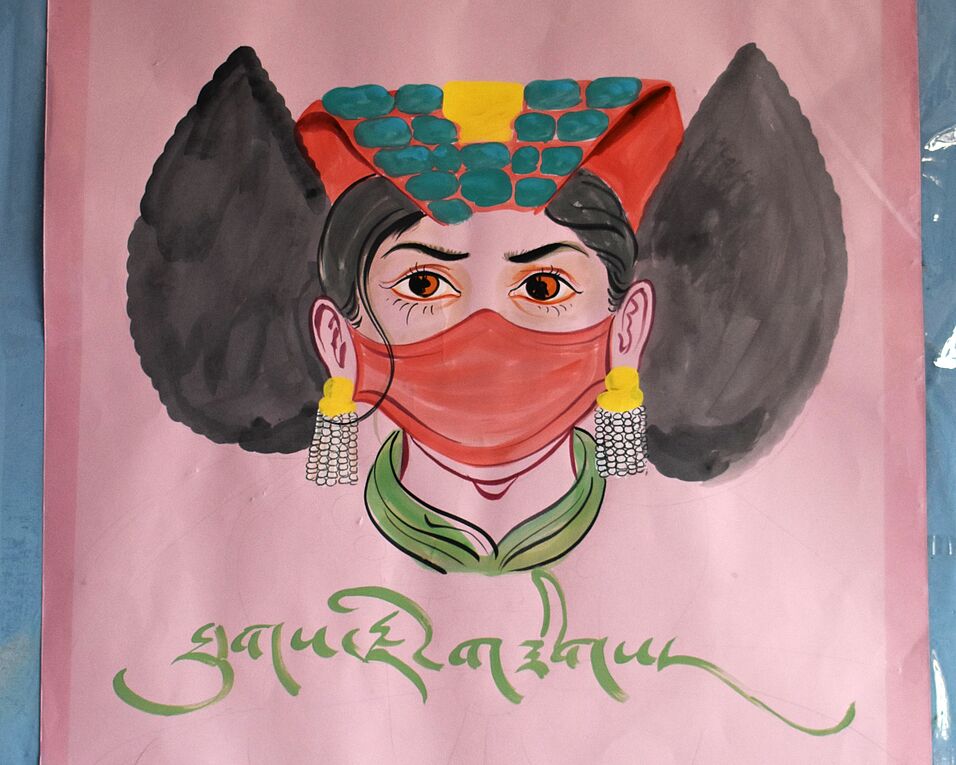Staff:
- Jan van der Valk
- William A. McGrath
Collaboration Partners:
- Tandin Dorji, president, Norbuling Rigter College, Paro, Bhutan
- Dendup Chopel, research fellow, Friedrich-Alexander-Universität Erlangen-Nürnberg
- Sienna R. Craig, Orvil Dryfoos Professor of Public Affairs, Department of Anthropology, Dartmouth College
- Nawang Tsering Gurung, coordinator, oral history project “Voices of the Himalayas,” New York
- Tawni L. Tidwell, postdoctoral research associate, University of Wisconsin-Madison
- Tenzin Namdul, assistant professor, University of Minnesota
- Yeshi Samdrup, Norbuling Rigter College, Paro, Bhutan
Project website: https://pandemic-narratives.univie.ac.at/
In this project, we explore Tibetan pandemic narratives, past and present, with a particular focus on prophecies, Tibetan medical (Sowa Rigpa) theories of infectious disease, protective pills, therapeutic recipes, and Buddhist rituals. We seek to investigate Himalayan and Tibetan pandemic narratives from religious (Unit 1), medical (Unit 2), and ecological viewpoints, with specific attention to spirits, deities and disease-causing agents (Unit 3). We trace the history of Tibetan Buddhist and medical responses to epidemics and assess contemporary (re)interpretations of Buddhist scriptures, medical therapies, and Himalayan ecologies. Our aim is to place the past in conversation with the present through a narrative approach that provides a deeper understanding of Tibetan and Himalayan responses to the current pandemic.
The 13th-century Buddhist text titled Vase of Ambrosia contains instructions on a special black amulet pill made of nine ingredients as well as other anti-epidemic recipes. These are now being used in Sowa Rigpa globally to prevent and treat COVID-19. Starting from this observation, our project has two hypotheses: (1) The Vase of Ambrosia emerged as a direct response to an outbreak of the Black Death in Tibet; and (2) The end-times prophecies, disease categories, protective pills, medical recipes, and ritual engagements with pathogenic agents that developed during the 13th and 14th centuries have informed Tibetan and Himalayan responses to infectious disease down to the present. To test these hypotheses, the team will philologically and ethnographically (in India, Nepal, and Bhutan; as well as online) analyze prophetic narratives, related ritual and medical instructions, evolving ideas of contagion, and the active roles of nonhuman forces in current end-time narratives. In a collaborative and comparative online component, we analyze pandemic narratives documented by Tibetan and Himalayan communities in New York (2020) and therapeutic approaches in an observational study of 15 Tibetan medical practitioners treating 140 patients with mild to medium COVID-19 symptoms (USA and Canada, 2020).
Our textual analysis of Tibetan religious and medical sources redefines current understandings of the Black Death and its global history. In this we incorporate recent genetic research which places the potential origins of the Black Death in Central Asia and Tibet.
In sum, this project presents the first nuanced study of Sowa Rigpa theories of infectious disease and reveals how past narratives have informed present-day outbreak responses.

